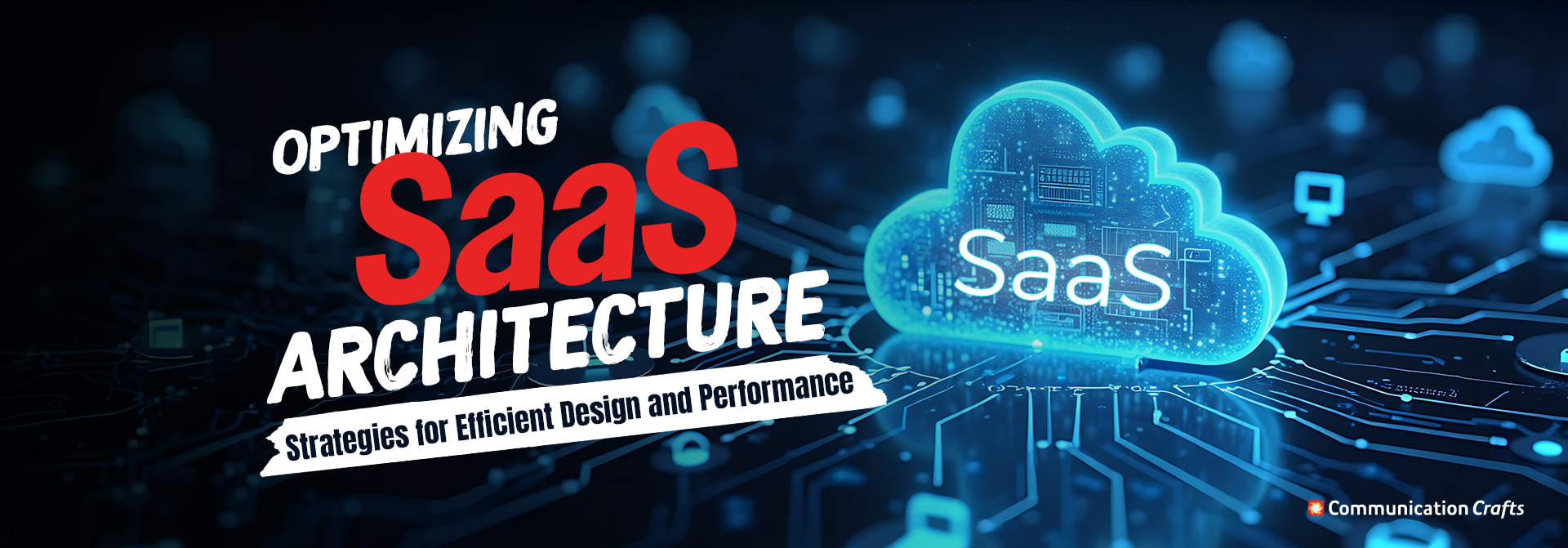SaaS (Software as a Service) apps have evolved into the preferred choice for companies trying to simplify their processes in the fast-changing technological scene. From tiny businesses to big companies, SaaS provides scalability, cost-effectiveness, and simple access to vital corporate tools. Still, creating and preserving a successful SaaS architecture that expands easily and runs well is no simple chore.
The ideal approaches to maximize SaaS architecture for improved design and performance are investigated in this blog. Whether you handle the technical details in-house or deal with a software development firm, these ideas will let you create a scalable, reasonably priced, and high-performance bespoke software solution able to meet the needs of your expanding user base.
Know the Fundamental Ideas of SaaS Design.
Understanding SaaS architectural ideas is essential before using optimization tactics. These ideas underlie the efficient design and performance of SaaS applications. Software as a service solutions must be scalable. SaaS design relies on the ability to accommodate growing workloads without sacrificing performance. This might be more people, data, or traffic.
Multi-tenant applications enable a single instance to serve several customers by separating their data and settings. This lowers operational expenses and resource utilization.
Software as a service (SaaS) architecture must automatically grow with demand. Elasticity is crucial to cloud-based systems. To maximize performance and cost-effectiveness, resources may be dynamically distributed. Resilient software as a service (SaaS) design assures that the application will operate and remain accessible even during unanticipated outages. Thus, effective failover systems, backups, and disaster recovery are crucial.
Use Microservices Architecture
Growing traditional monolithic programs can find scalability and performance challenging. Microservices architecture provides the answer. This method divides a difficult program into smaller, doable services that operate independently yet interact via APIs.
Microservices let separate services be scaled separately, therefore guaranteeing that resources are distributed where they most required. Faster Development, yes! Dividing the application into smaller pieces allows development teams to concurrently work on many areas of the project, therefore accelerating time-to-market and clearing of obstacles.
Microservices allow one failing service not to impact the others. This isolation promotes the general system stability.
A microservices-savvy software development business may help ensure seamless integration of unique software development solutions. These technologies will help you build a scalable and fast software as a service solution.
Cloud-Native for Optimizing SaaS architecture
Use Cloud-Native Services Optimizing SaaS architecture with Cloud-native services is revolutionary. These services use cloud technology to provide more scalability, dependability, and freedom.
Elastic Load Balancing guarantees equal distribution of traffic across servers, therefore avoiding overload on any one server. It helps preserve best performance by dynamically responding to varying traffic levels. Cloud services provide automatic scalability depending on demand sensed in real time. AWS Auto Scaling or Azure’s Virtual Machine Scale Sets, for example, may dynamically modify your computing capacity to match demand surges, therefore lowering the risk of downtime and maximising resource utilization.
“Database as a Service” (DBaaS) refers to cloud providers’ scalable database solutions. These storage solutions automatically adapt to your performance and storage demands. Managed databases with high availability, backup, and recovery may minimize internal database maintenance costs.
Custom software solutions developed around these cloud-native services can let you greatly lower infrastructure administration overhead and improve performance.
Refine Storage and Data Management
Any SaaS application starts with data, hence good data management may significantly affect performance. Minimizing latency and enhancing scalability by means of optimal data storage, retrieval, and processing helps distribution of the load in large-scale applications depends on data partitioning—that is, sharding—the data across many servers or databases. This method guarantees that every server manages only a fraction of the data, therefore optimizing performance and accelerating data access.
Frequent access to frequently used data speeds up retrieval and decreases database load. Data may be stored in memory using Redis or Memcached. This speeds up data retrieval without querying the database. Maintaining a mix of consistency and availability is very vital in distributed systems. Certain SaaS products may choose ultimate consistency, in which case the system assures data consistency throughout time instead of immediate, therefore lowering latency and enhancing speed.
Compressing big data files and removing duplicate data can help you to free up important storage capacity and increase the effectiveness of your data processing.
Improve Compliance and Security
Security and regulatory compliance are becoming increasingly important as more firms adopt SaaS solutions. Some of the best ways to secure and function your software as a service application are listed below:
- End-to-end encryption for in-transit data and multi-factor authentication and OAuth can protect your users and their data.
- Many SaaS solutions must comply with GDPR, HIPAA, and SOC 2.
- Your architecture must be designed to meet compliance needs including data security, audit logs, data protection, and safe data storage.
- APIs underpin current software as a service application, but they pose security issues.
- Private data privacy requires API closure and proper authentication and permission.
- Your software as a service (SaaS) application may be secure and successful by prioritizing security without sacrificing speed.
Track Performance and apply ongoing improvement.
Constant performance monitoring is among the best strategies to guarantee that your SaaS design remains optimal. Using applications performance management (APM) solutions such as Datadog or New Relic will enable you to instantly check the state of your application.
Profiling and monitoring technologies enable you to find architectural inefficiencies and bottlenecks: These tools provide practical insights to assist maximize speed regardless of the sluggish database search or busy server. Continuous Integration and Continuous Delivery Pipelines and Constant Deliverability: Adopting a CI/CD (Continuous Integration and Continuous Delivery) strategy ensures that your architecture is always up to date and operating at its peak performance. This is accomplished by allowing the rapid deployment of updates, bug fixes, and optimizations.
Load testing, which simulates heavy traffic, can help you uncover performance issues before they affect your users. Load test often to ensure your system won’t fail amid high usage, you may avoid issues this way.
Cut Latency for Enhanced User Experience
It is important to cut down on delay so that users have a smooth experience. That being said, software as a service (SaaS) providers might have trouble reaching this goal.
Internet users call these networks “content delivery networks” (CDNs). Data can be obtained from computers closer to the user. Using a CDN to store important data improves user experience. This storage method is called “content delivery.” This greatly reduces load times. By processing data closer to users, delays can be reduced. This will eliminate the need for extensive trips to central computers. Gaming and banking might benefit from real-time data analysis.
Effective and efficient coding reduces delays. Reduce HTTP requests, compress visuals, and make data more accessible to reduce start times.
SaaS Architecture: Cost Optimization
Your software as a service architecture must be optimized for speed and cost. Examples of operational expenditure reductions:
- Monitoring resources and server use may reduce needless spending and undetected over-sourcing.
- Serverless design simply charges for processing power.
- Amazon S3 for huge files and Amazon Glacier for historical data reduce storage costs and performance.
- Pay-as-you-go cloud pricing may be better than flat-rate. This may lower rates further, particularly off-peak.
Last Thought
The optimization of software as a service (SaaS) architecture demands extensive study on scalability, microservices, cloud-native services, data management, and more. These ideas help firms create scalable, efficient, secure, and economical SaaS systems. Businesses that want to build a robust and high-performance software as a service (SaaS) solution may find the expertise they need by working with a customized software development company. The most essential lessons are to be flexible, analyse performance, and make staged improvements to guarantee your software as a service (SaaS) architecture can grow with your firm.
 Blog Communication Crafts
Blog Communication Crafts





